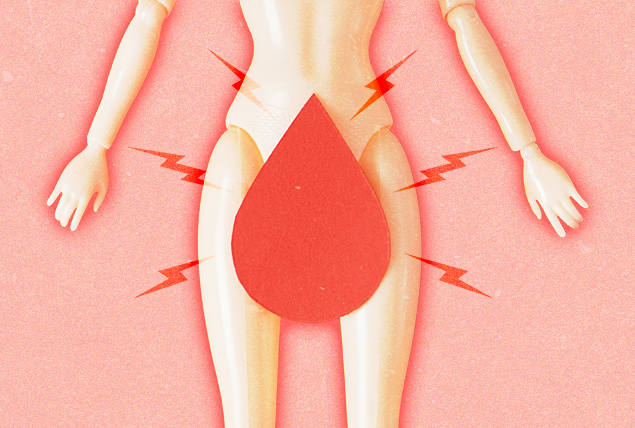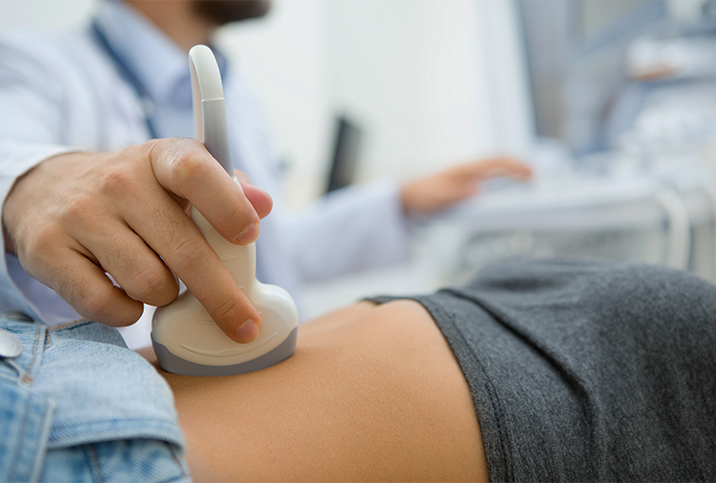Why Are Some People Misdiagnosed Even With Symptoms of Endometriosis?

Period pain is a common issue among women. Some experience back pain and muscle cramping. Others suffer pelvic pain or nausea.
Painful periods are so common that it's easy to wonder: What's normal and what's a sign of a medical condition such as endometriosis?
Endometriosis, sometimes referred to as "endo," can affect more than 11 percent of American women between the ages of 15 and 44, according to the Office on Women's Health, part of the U.S. Department of Health and Human Services. With this condition, tissue similar to the endometrium, which is the uterine lining, grows outside the uterus and attaches to areas where it doesn't belong, such as the ovaries or fallopian tubes.
Untreated endometriosis can lead to fertility issues and problems with the bowels and bladder. That's why it's essential to know the symptoms of endometriosis and get treatment if you think you might have the condition.
Symptoms of endometriosis
The main symptoms of endometriosis involve pain, including pelvic pain, rectal pain, painful sex and painful periods, according to Kecia Gaither, M.D., board-certified in OB-GYN and maternal-fetal medicine and the director of perinatal services/maternal-fetal medicine at NYC Health + Hospitals/Lincoln in the Bronx in New York City.
Unfortunately, everyone's unique descriptions of and tolerances for pain can make diagnosis difficult. A general symptom such as pain during intercourse can be caused by other factors, from fibroids to pelvic inflammatory disease (PID) and from pelvic floor dysfunction to irritable bowel syndrome (IBS).
In more detail, the common symptoms of endometriosis include the following:
- Pelvic pain. Endometriosis pain can happen on one or both sides of your pelvis. It typically starts a day or two before your period and lasts until the bleeding stops. However, some women experience chronic pelvic pain from endometriosis, according to a 2008 report published by the Canadian Institutes of Health Research.
- Rectal pain. Depending on where the endometrium-like tissue is growing, you might feel pain around your rectum or perineum (the area between your anus and vaginal opening). Rectal pain from endometriosis is most common during bowel movements, according to Gaither.
- Dyspareunia. Painful penetrative sex, known as dyspareunia, can point to endometriosis. You might experience deep, aching pain if the endometrial tissue is bumped or stretched.
- Heavy, painful periods. Severe menstrual cramps and heavy bleeding during or between periods are familiar signs of endometriosis.
- Infertility. In some situations, a woman seeking help for fertility problems is found to have endometriosis, according to Mayo Clinic.
Tests to diagnose endometriosis
If you're experiencing painful, heavy periods or unexplained pelvic pain, consider making an appointment to see a gynecologist. Or, if you have an upcoming pelvic exam or Pap smear scheduled, don't hesitate to bring up the pain with your doctor then.
An endometriosis diagnosis often takes time. A definitive diagnosis is made only during a surgical procedure called a laparoscopy, but the process begins with a physical pelvic exam. Many doctors also recommend an ultrasound before moving on to a laparoscopic evaluation.
Pelvic exam
A pelvic exam allows the doctor to check for physical signs of endometriosis. During the exam, the doctor does an internal and external check of your genitals.
To begin, you lie on your back and place your feet in stirrups. Next, the doctor inserts a finger into your vagina to manually feel for signs of endometriosis. They're looking for abnormal lumps, cysts or scars. Finally, the doctor inserts a speculum into your vagina. This metal medical tool presses against the vaginal walls to open the vagina so the doctor can visually check for abnormalities.
Endometriosis is not diagnosed based on a pelvic exam alone, but the exam can help your doctor find signs of the condition.
Ultrasound
If your doctor suspects endometriosis, they may recommend a transvaginal ultrasound, an abdominal ultrasound or both. Ultrasounds use sound waves to create a picture of your internal organs. Endometriosis involves clumps of tissue forming where they don't belong, so an ultrasound can help identify some of those clumps and cysts that the doctor might not have seen during your pelvic exam.
During an ultrasound, you lie back on an exam table. A medical professional presses a wand-like device against your stomach or inserts it into your vagina to create images of your internal organs. Abdominal ultrasounds are entirely noninvasive. Transvaginal ultrasounds require the device to be inserted and moved around in your vaginal canal, but the process shouldn't hurt.
Like a pelvic exam, an ultrasound cannot diagnose endometriosis. This test is just one more step toward diagnosing the cause of your symptoms.
Laparoscopic biopsy
A pelvic exam and ultrasound can help confirm your doctor's suspicions about the cause of your symptoms, but surgery is necessary for a doctor to see inside your pelvis or abdomen and confirm an endometriosis diagnosis.
"A definitive diagnosis is made by taking a biopsy during the course of laparoscopic evaluation," Gaither explained. "This procedure can not only diagnose but stage the endometriosis as well."
Laparoscopic surgeries are performed in hospitals and outpatient clinics under general anesthesia. The surgeon makes a small incision, usually near your belly button, and inserts a thin tube with a camera attached. The video feed displays on a monitor, allowing your surgeon to look for endometrial tissue.
During the procedure, your surgeon might also remove a small piece of tissue to assess it under a microscope. This can help guide your doctor's recommendations for treatment.
Why is endometriosis so misdiagnosed?
It takes an average of 8.6 years from symptom onset to get a definitive endometriosis diagnosis. That's according to a 2020 self-reported national online survey with results published in the medical journal Diagnosis.
What takes so long? And why did 75.2 percent of survey respondents report being misdiagnosed with another condition first?
"Endometriosis symptoms can mimic other clinical entities," Gaither said.
For instance, if your primary symptom is pelvic pain, you might get misdiagnosed with ovarian cysts or PID. Sometimes endometriosis can also be misdiagnosed as or masked by irritable bowel syndrome.
The lengthy, complex diagnosis process can be intimidating, but that's all the more reason to seek help soon if you're experiencing one or more symptoms of endometriosis.
Starting a conversation with a physician can happen quickly with telehealth. Many healthcare professionals have added video appointments as a service. You can't be diagnosed during a video visit, but you can talk to a doctor and gauge your comfort level before continuing. Giddy telehealth makes it easy to get connected to qualified healthcare professionals who can help with a variety of conditions. Many offer same-day appointments.


















